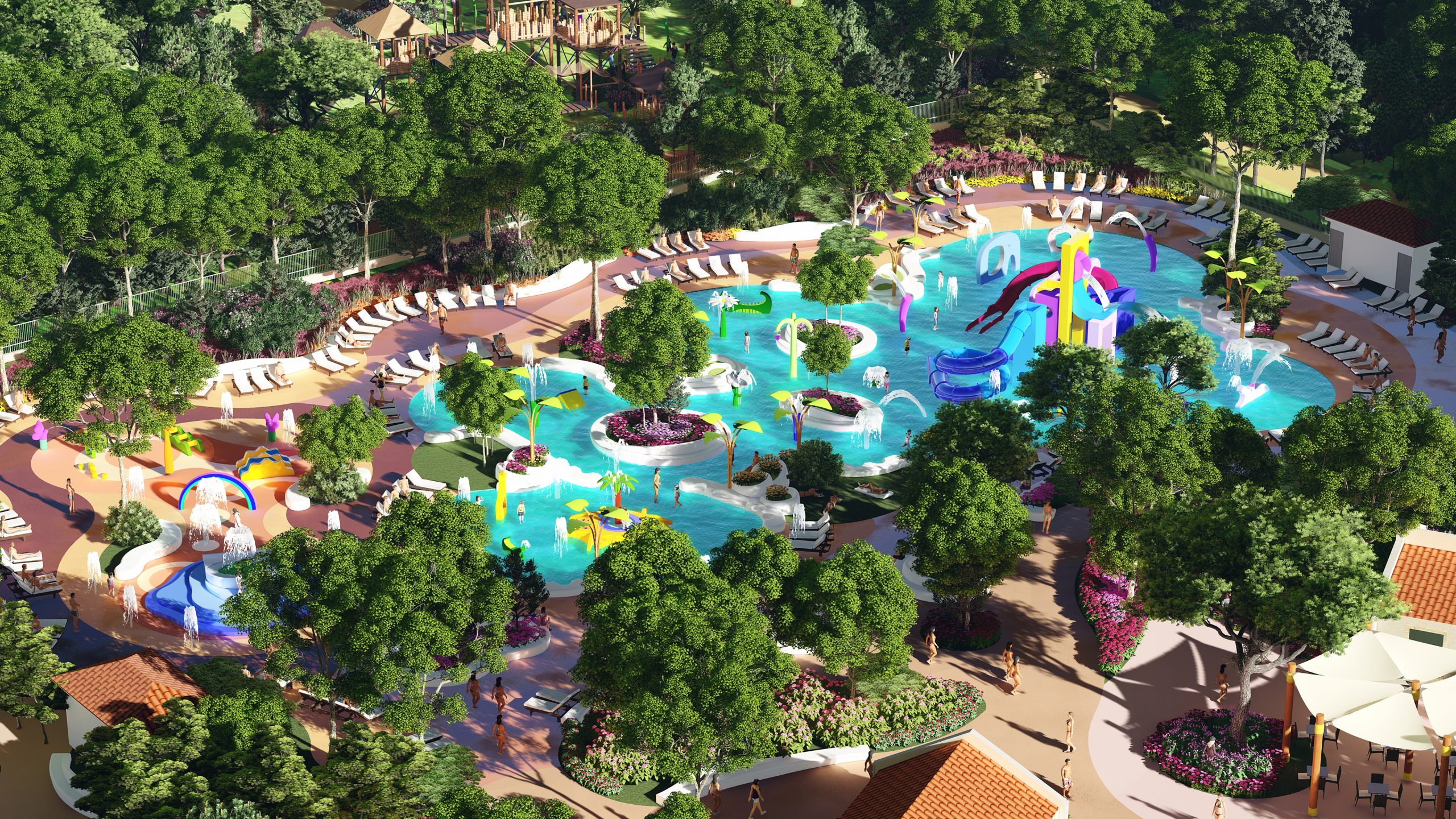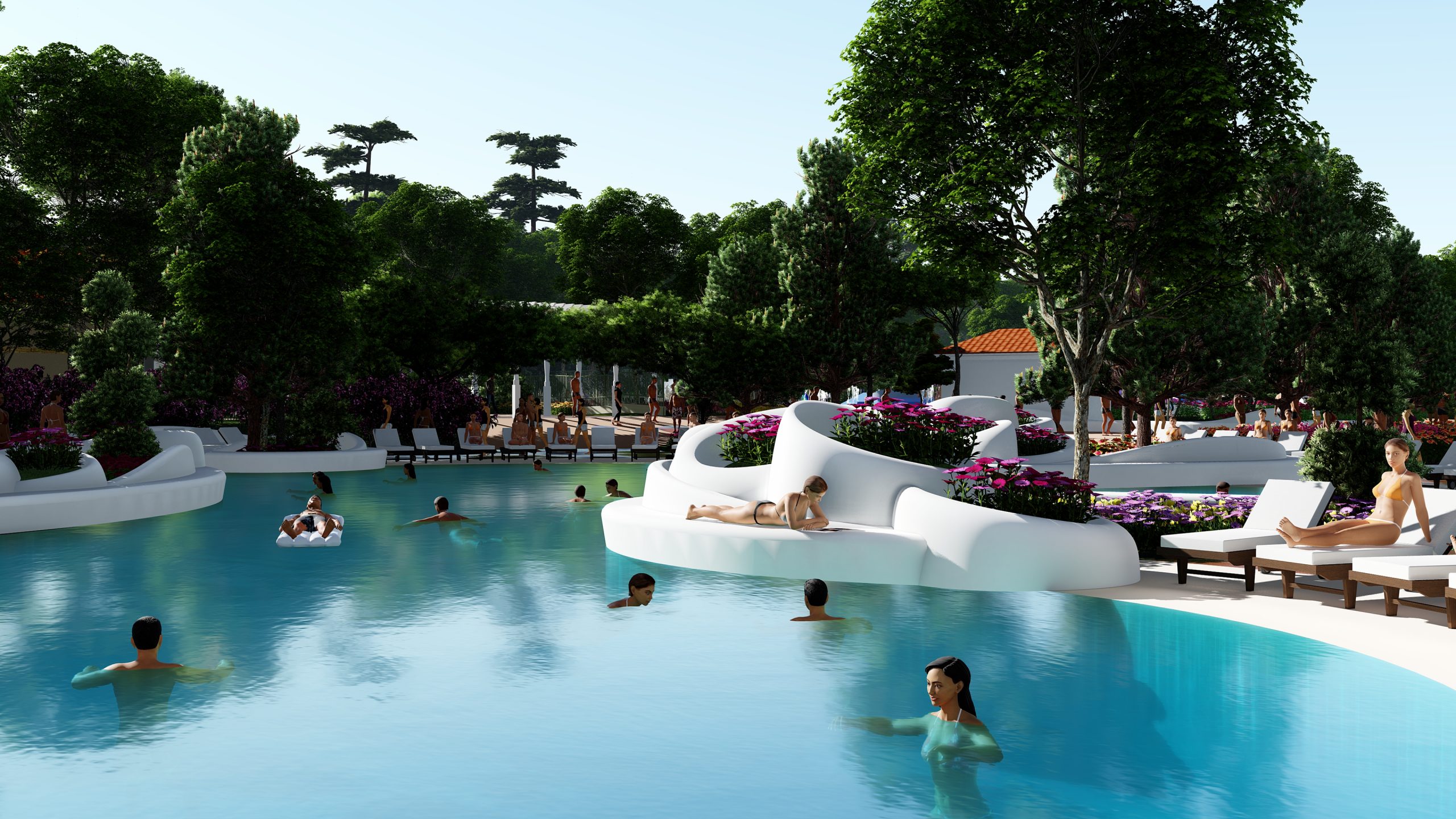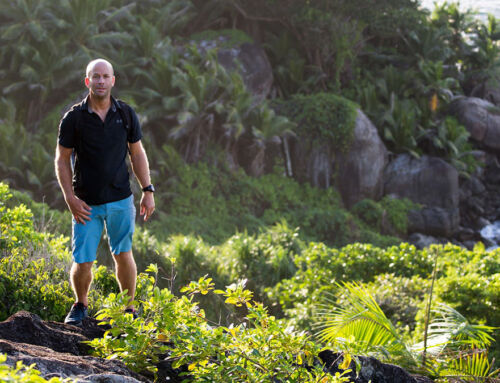Landscaping in the tourism and leisure industry is a complex discipline, which combines the design of landscaped areas with the location and integration of buildings, as well as the installation of all kinds of aquatic or dry attractions. It is multi-faceted work, whose ultimate goal is to create an environment that is both harmonious and practical. In short, the aim is to provide visitors with all the possibilities to fully enjoy a beautiful and safe site, where it is easy for them to find their way around and choose from a variety of unique experiences, in balance with each other. Here we offer the key elements, the “colour palette” which we use in our work of designing and integrating landscapes and attractions.
We’ll go through this palette, from the most general features to the most particular. Scale and proportion are the most general aspects, the first ones that attract attention when observing a design: it is about the relation of the parts with the whole, and of the whole with the context or setting where it is integrated. In this sense, it’s essential, as well as contributing to its sustainability, to take advantage of the elements offered by nature, prior to our arrival. After all, both the woodlands and the orography of the place have developed over decades, perhaps centuries, and nothing will therefore surpass the sense of harmony and equilibrium they provide. Once we have settled into the general environment, the proportion and scale between the masses will help us in that sense.
Once the masses are distributed and proportioned, it is necessary to take a magnifying glass and magnify the detail. Attributes such as shape, line, orientation, variety, rhythm and repetition now enter the game. All of these apply to gardens and their components, as well as to the buildings and attractions that form part of the design, without ever losing sight of practical issues such as use, circulation, perspectives and the comfort of their ultimate recipients.
Finally, new elements from our palette come into play, which are even more particular and specific: textures and colours, as well as the imagining or imitation of models. Now, once the general practical questions have been resolved, it is the theming, the storytelling of the whole ensemble, that is the guiding principle. Thus, we can reproduce the Colorado Canyon, or Niagara Falls, or the Moon, or a wreck on the sea bed. Textures, colours, figuration and models will have led us to the completion of the landscape.








